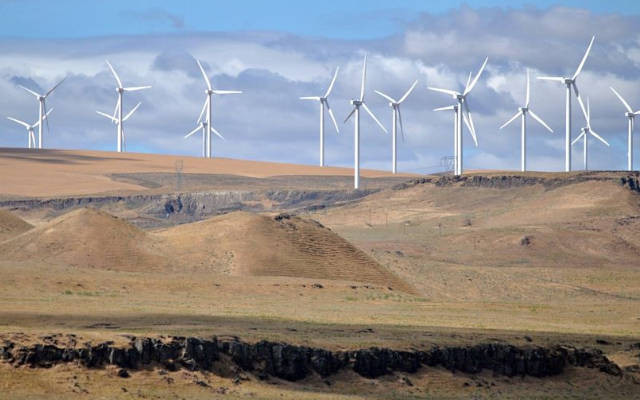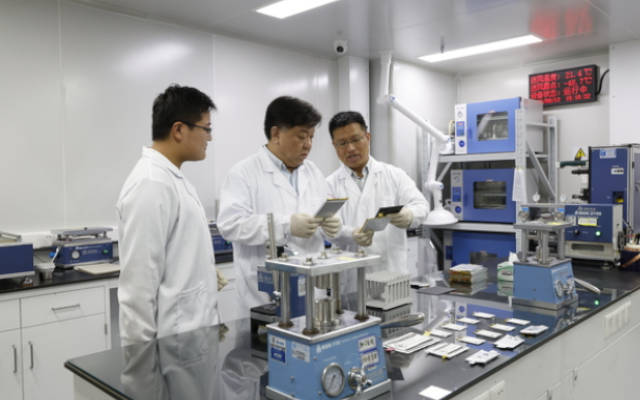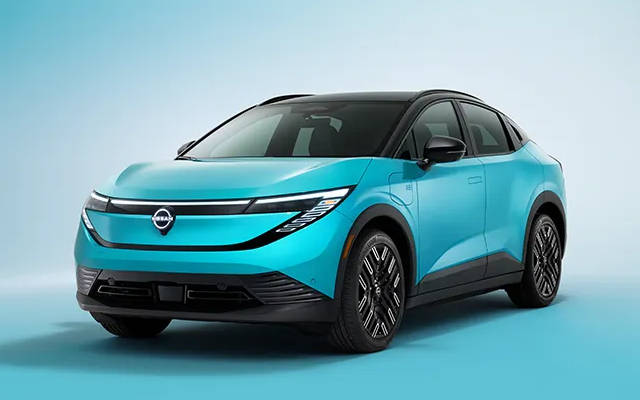 EDITOR'S PICK
EDITOR'S PICK
Africa: The Green Transition's Surprising New Home
21 Aug 2025 | Synopsis
 Africa emerges as unexpected renewable energy leader, "leapfrogging" fossil fuels with 60% of world's best solar resources. Kenya targets 100% renewables by 2030, Ethiopia builds largest hydro project. Chinese clean tech exports up 153%. By 2030, renewables will account for 80%+ of new capacity. Economic necessity drives energy independence through domestic clean sources.
Africa emerges as unexpected renewable energy leader, "leapfrogging" fossil fuels with 60% of world's best solar resources. Kenya targets 100% renewables by 2030, Ethiopia builds largest hydro project. Chinese clean tech exports up 153%. By 2030, renewables will account for 80%+ of new capacity. Economic necessity drives energy independence through domestic clean sources.Cybertruck Insurance Dilemma: Tesla's Challenge Ahead
21 Aug 2025 | Synopsis
 Tesla's Cybertruck faces an insurance crisis as major providers like GEICO and Hanover rescind coverage due to high repair costs, limited production data, and underwriting challenges. Owners report cancellations and steep premiums, while Tesla's own insurance offers partial relief in select states. The issue threatens future sales and highlights the gap between bold design and real-world support, leaving buyers uncertain and Tesla under pressure to respond.
Tesla's Cybertruck faces an insurance crisis as major providers like GEICO and Hanover rescind coverage due to high repair costs, limited production data, and underwriting challenges. Owners report cancellations and steep premiums, while Tesla's own insurance offers partial relief in select states. The issue threatens future sales and highlights the gap between bold design and real-world support, leaving buyers uncertain and Tesla under pressure to respond.The Lithium Wars: EnergyX, Tesla, and the Race to Reinvent Battery Supply
20 Aug 2025 | Synopsis
 EnergyX and Tesla are racing to reshape lithium supply chains. Energyx's modular LiTAS™'s system extracts lithium from brine with high efficiency, while Tesla builds a $1B acid-free refinery in Texas. Smackover, AR is EnergyX's likely launch site, offering infrastructure and proximity to EV markets. Meanwhile, sodium-ion batteries emerge as a low-cost alternative, potentially disrupting lithium demand but not replacing it. The future of batteries is diversified, fast, and fiercely competitive.
EnergyX and Tesla are racing to reshape lithium supply chains. Energyx's modular LiTAS™'s system extracts lithium from brine with high efficiency, while Tesla builds a $1B acid-free refinery in Texas. Smackover, AR is EnergyX's likely launch site, offering infrastructure and proximity to EV markets. Meanwhile, sodium-ion batteries emerge as a low-cost alternative, potentially disrupting lithium demand but not replacing it. The future of batteries is diversified, fast, and fiercely competitive.China's 600 Wh/kg Lithium-Metal Battery Breakthrough: Hype or Real Progress?
19 Aug 2025 | Synopsis
 Chinese researchers report lithium-metal pouch cells reaching 600 Wh/kg - nearly double today's EV batteries. Published in Nature, the work uses a novel electrolyte and shows promising density but only ~100 cycles, far short of EV needs. Scaling, safety, and cost remain unproven. While credible science, it's early-stage. Current leaders like CATL, BYD, Amprius, and SES offer lower but durable densities; no one is yet close to 600 Wh/kg for real EVs.
Chinese researchers report lithium-metal pouch cells reaching 600 Wh/kg - nearly double today's EV batteries. Published in Nature, the work uses a novel electrolyte and shows promising density but only ~100 cycles, far short of EV needs. Scaling, safety, and cost remain unproven. While credible science, it's early-stage. Current leaders like CATL, BYD, Amprius, and SES offer lower but durable densities; no one is yet close to 600 Wh/kg for real EVs.2026 Nissan LEAF: Performance Meets Value in America's Most Affordable EV
19 Aug 2025 | Synopsis
 2026 Nissan LEAF redesign: 303-mile range, Tesla Supercharger access, starts $29,990 - America's cheapest new EV. 75kWh battery, 35-min fast charging, crossover styling vs old hatch. SV+ trim $34,230, undercuts 2025 by $1,960 despite more features. Available fall 2025. Targets affordable EV market vs premium competitors. Google built-in, panoramic roof, flush door handles. Could revive pioneering nameplate.
2026 Nissan LEAF redesign: 303-mile range, Tesla Supercharger access, starts $29,990 - America's cheapest new EV. 75kWh battery, 35-min fast charging, crossover styling vs old hatch. SV+ trim $34,230, undercuts 2025 by $1,960 despite more features. Available fall 2025. Targets affordable EV market vs premium competitors. Google built-in, panoramic roof, flush door handles. Could revive pioneering nameplate.
 EVWorld Exclusive
EVWorld Exclusive
Horse Powertrain: The Hybrid Trojan Horse
17 Oct 2025 |  Horse Powertrain, a joint venture by Renault, Geely, and Aramco, offers compact hybrid engines like the C1 to retrofit EV platforms. Designed as range extenders, these engines run on multiple fuels and meet Euro 7 standards. Though marketed as green tech, their real-world impact is debated - especially as studies show PHEVs are rarely charged. Horse may be a transitional solution, but 500-mile EVs are poised to dominate long-term.
Horse Powertrain, a joint venture by Renault, Geely, and Aramco, offers compact hybrid engines like the C1 to retrofit EV platforms. Designed as range extenders, these engines run on multiple fuels and meet Euro 7 standards. Though marketed as green tech, their real-world impact is debated - especially as studies show PHEVs are rarely charged. Horse may be a transitional solution, but 500-mile EVs are poised to dominate long-term.
Sticker Shock and Stagnant Pay: Why New Cars Are Slipping Out of Reach
17 Oct 2025 |  New car prices have outpaced wage growth, making ownership increasingly unaffordable. Even Ford's $30K EV pickup and other sub-$30K models may remain out of reach for many without incentives or financing reform. With monthly payments rising and federal credits phasing out, the affordability gap is reshaping the auto market. Shared mobility and micro-EVs may offer alternatives, but structural change is needed to restore access.
New car prices have outpaced wage growth, making ownership increasingly unaffordable. Even Ford's $30K EV pickup and other sub-$30K models may remain out of reach for many without incentives or financing reform. With monthly payments rising and federal credits phasing out, the affordability gap is reshaping the auto market. Shared mobility and micro-EVs may offer alternatives, but structural change is needed to restore access.
Toyota FT-Me: Shared Mobility Concept with Big Implications
17 Oct 2025 |  Toyota's FT-Me is a two-seat electric microcar designed for shared urban mobility, not just teens. Developed with UK government support, it features hand-only controls, solar panels, and a lightweight frame. Aimed at car clubs and last-mile use, it could offer affordable, accessible transport with low emissions. With steady utilization and supportive policy, FT-Me may become a viable, sustainable option in the UK's evolving mobility landscape.
Toyota's FT-Me is a two-seat electric microcar designed for shared urban mobility, not just teens. Developed with UK government support, it features hand-only controls, solar panels, and a lightweight frame. Aimed at car clubs and last-mile use, it could offer affordable, accessible transport with low emissions. With steady utilization and supportive policy, FT-Me may become a viable, sustainable option in the UK's evolving mobility landscape.
Creative Destruction vs. Fossil Retrenchment: Why Project 2025 Risks Leaving America Behind
16 Oct 2025 |  Project 2025 protects fossil fuel incumbents by dismantling Biden-era clean energy policies. Nobel economist Philippe Aghion argues that climate progress depends on creative destruction - letting green innovators outcompete legacy polluters. The U.S. risks falling behind as global markets embrace clean tech. Even its passport has slipped from the top 10. Innovation, not retrenchment, is the path forward
Project 2025 protects fossil fuel incumbents by dismantling Biden-era clean energy policies. Nobel economist Philippe Aghion argues that climate progress depends on creative destruction - letting green innovators outcompete legacy polluters. The U.S. risks falling behind as global markets embrace clean tech. Even its passport has slipped from the top 10. Innovation, not retrenchment, is the path forward
Buick Electra E5: China-Built EV Poised for U.S. Launch
16 Oct 2025 |  Buick's Electra E5, built in China by SAIC-GM, is set to become GM's first imported EV for the U.S. market. Though its launch was delayed indefinitely in 2024, a tentative 2026 rollout remains part of GM's electrification roadmap. With Ultium battery tech, strong performance specs, and positive reception in China, the Electra E5 represents a strategic shift in global EV sourcing and branding.
Buick's Electra E5, built in China by SAIC-GM, is set to become GM's first imported EV for the U.S. market. Though its launch was delayed indefinitely in 2024, a tentative 2026 rollout remains part of GM's electrification roadmap. With Ultium battery tech, strong performance specs, and positive reception in China, the Electra E5 represents a strategic shift in global EV sourcing and branding.
SEARCH RSSTREAM
 29 New Postings In Past 24 Hours
29 New Postings In Past 24 Hours
Category:energy
Region:AsiaPacific
Date:19 Oct 2025
Category:energy
Region:NoAmerica
Date:19 Oct 2025
Category:policy
Region:NoAmerica
Date:19 Oct 2025
Category:review
Region:AsiaPacific
Date:19 Oct 2025
Category:finance
Region:NoAmerica
Date:19 Oct 2025
Category:autonomy
Region:NoAmerica
Date:19 Oct 2025
Category:policy
Region:AustralPacific
Date:19 Oct 2025
Category:energy
Region:Europe
Date:19 Oct 2025
Category:mobility
Region:NoAmerica
Date:19 Oct 2025
Category:energy
Region:NoAmerica
Date:19 Oct 2025
Category:mobility
Region:AsiaPacific
Date:19 Oct 2025
Category:mobility
Region:NoAmerica
Date:19 Oct 2025
Category:energy
Region:NoAmerica
Date:19 Oct 2025
Category:energy
Region:NoAmerica
Date:19 Oct 2025
Category:energy
Region:AsiaPacific
Date:19 Oct 2025
Category:mobility
Region:NoAmerica
Date:19 Oct 2025
Category:policy
Region:SoAmerica
Date:19 Oct 2025
Category:energy
Region:Europe
Date:19 Oct 2025
Category:mobility
Region:AsiaPacific
Date:19 Oct 2025
Category:environment
Region:Global
Date:19 Oct 2025
